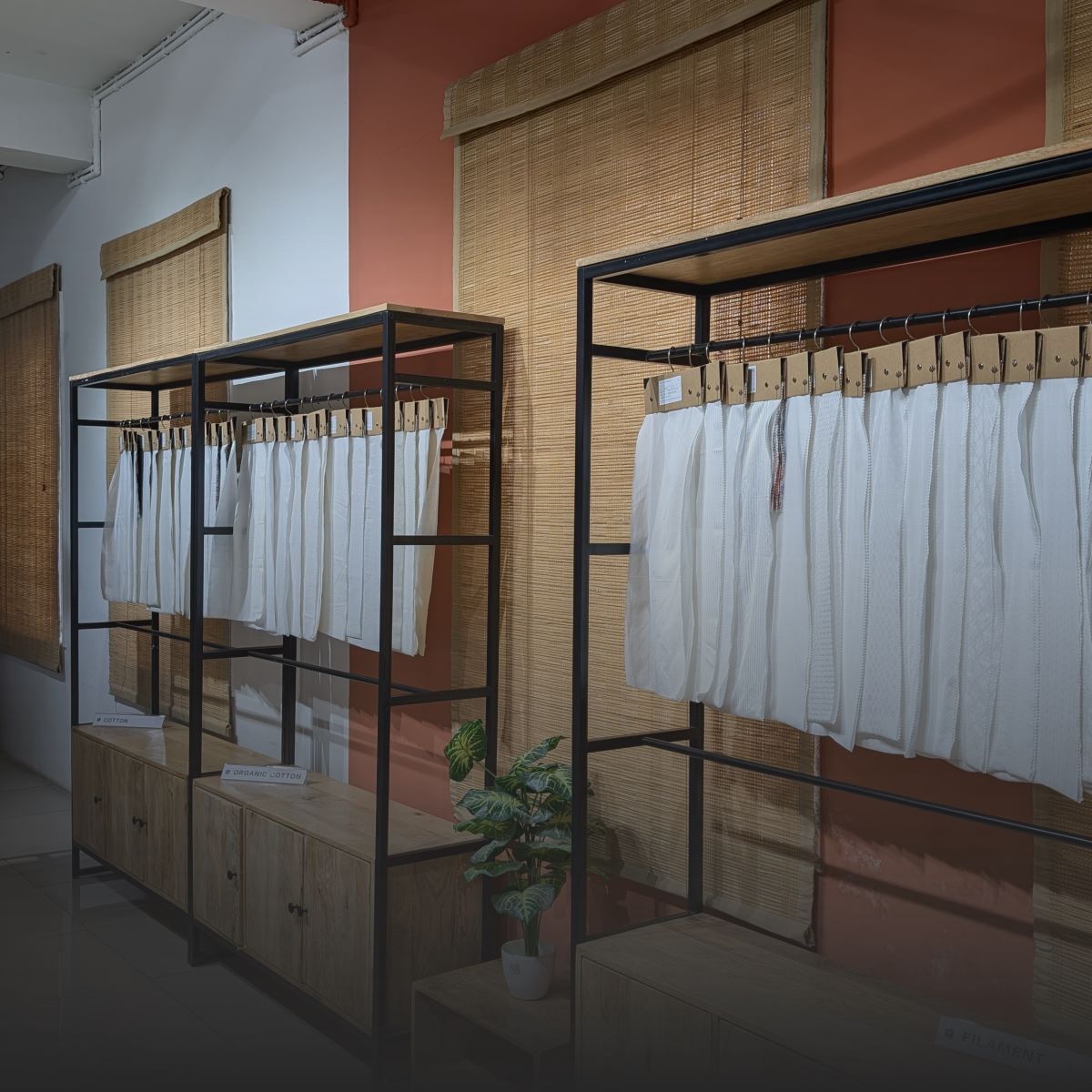The U.S. online clothing market reached $134.5 billion in 2023 and is projected to grow to $220 billion by 2025. With 70% of shoppers preferring to buy online, it's clear that the digital space is where your clothing business needs to be.
But how can you make your brand stand out in such a crowded market?
This blog will walk you through the essential strategies to market your clothing business online. You will learn how to identify and connect with your ideal customers, build a memorable brand and increase your sales.
From social media tips to creating captivating visuals and optimizing your website, we have actionable advice to help your business succeed. Let’s dive in.
Read For More Information: How to Market Your Clothing Business Online?
Understanding Your Target Market: How to Identify Your Ideal Customer Demographics
Understanding Your Target Market
To find your ideal customer, start by analyzing their basic details. Use tools like Google Analytics or Facebook Insights to gather data on their age, gender, location and shopping habits. You can also ask customers directly through surveys to get a clearer picture.
Track how they behave online. Look at their browsing history, what they purchase and how they engage with your social media. This will show what interests them and how they interact with your brand.
Creating Customer Personas
Build clear customer profiles that reflect who they are. Focus on their everyday lives, problems and what drives them to make purchases. For example, some customers might care about sustainability, while others might prioritize low prices.
Use these personas to guide your marketing. When you know their pain points and needs, you can create offers and messages that speak directly to them.
Practical Steps to Identify Your Audience
- Use Google Analytics to see who visits your site.
- Check Facebook Insights for social media engagement.
- Ask customers to fill out quick surveys about their preferences.
- Track purchases and website interactions.
These steps will help you understand who is interested in your product and why.
Refining Your Strategy
Once you understand your audience, tailor your messages and offers to match their interests. Speak directly to their needs and show how your product or service solves their problems. Keep testing and refining based on the feedback you get.
Read For More Information: How to Build an Online Clothing Business Store in the USA
Building a Strong Brand Identity for Your Clothing Business: Create a Memorable Brand
To stand out, your brand needs a clear identity. Start by defining your core values. What does your brand stand for? Is it sustainability, inclusivity or innovation? Whatever it is, make sure these values come through in your messaging.
Key Steps to Build Your Brand Identity:
-
Define Your Brand Values: Focus on what matters to you and your customers. For example, if sustainability is your core value, showcase your eco-friendly practices.
-
Create a Mission: State why your brand exists. Keep it clear and direct. Your mission should resonate with your audience and guide all your decisions.
-
Show Personality: Your brand's personality should shine through every piece of content you create. Be authentic.
Consistency is Crucial
Maintain a consistent message across all platforms. This means the tone, visuals, and values should stay the same on your website, social media and emails. It builds trust and helps customers recognize your brand.
-
Be Consistent: Your message should never change, whether you are posting on Instagram or sending an email.
-
Visuals Matter: Use the same color palette, fonts and logo everywhere.
-
The tone of Voice: Keep your tone aligned with your brand, whether it's friendly, professional or playful.
Real-World Examples
Look at brands like Patagonia and Glossier. Patagonia communicates its commitment to sustainability, while Glossier builds a community-driven brand. These companies are consistent in their messaging and visuals across all platforms.
Brand Consistency During Collaborations
Even during collaborations, keep your brand identity intact. Work with influencers or other brands that share your values. Ensure they align with your messaging and do not dilute your core brand.
-
Choose Partners Wisely: Collaborate with brands or influencers who share your values.
-
Set Guidelines: Make sure your brand’s visuals and messaging remain consistent.
Creating High-Quality Product Visuals: Photography and Video for Clothing Brands
Product Photos and Videos
- High-quality images are key to online sales.
- Use natural light to make your clothes look great.
- Keep backgrounds simple and clean.
- Show your product from different angles.
- Include lifestyle shots; show the clothes being worn.
Tell a Story with Your Visuals
- Do not just show products. Tell a story.
- Share behind-the-scenes photos or videos.
- Give styling tips with your visuals.
- Show customer reviews to build trust.
- Create a story that connects your brand to your audience.
Instagram and TikTok Tips
- Instagram and TikTok are perfect for visuals.
- Use them to show your clothes in action.
- Ask customers to share their photos and repost them.
- Make fun, engaging content to build a community.
Affordable Tools for Small Businesses
- Professional photos are great, but you can also take them yourself.
- Use tools like Canva or Adobe Spark to make your visuals look professional.
- These tools are easy to use and budget-friendly.
SEO for Clothing Businesses: Simple Steps to Rank Your Store on Google
Why SEO Matters:
SEO is key for visibility. Even the best products can get lost if your store is not optimized. To attract traffic, start by adding relevant keywords to product descriptions. For example, use phrases like "women's leather jackets" or "organic cotton t-shirts." Focus on long-tail keywords to target specific groups.
Optimize Your Pages:
Your product pages and category pages need to be optimized for search engines.
- Use keywords in titles and meta descriptions.
- Add relevant content to category pages, like best sellers or new arrivals.
- Include blog posts on fashion trends or outfit ideas to boost engagement.
Improve Product Images:
Images help customers see your products clearly, but they also need to be optimized for SEO.
- Use alt-text for every image to describe the product.
- Compress images so your site loads faster.
Structured Data:
Use Schema.org to mark up your product details. This helps search engines understand your products better, which can improve your visibility in search results.
By following these steps, you increase your chances of ranking higher on Google, driving more traffic to your store.
Best Social Media Platforms for Marketing Your Clothing Business in the USA
-
Instagram: Perfect for showcasing your products visually. Use it for lifestyle shots, product showcases and behind-the-scenes content.
-
Pinterest: Great for creating mood boards and sharing trending looks. It is ideal for driving traffic to your website.
-
TikTok: Create viral, fun content that creatively highlights your products. Use challenges, tutorials or styling tips.
-
Facebook: Use for building a community. Share promotions and stories and interact with your followers through groups.
Posting Regularly and Engaging Your Audience
- Post consistently: Share product shots, influencer collaborations and user-generated content.
- Respond to comments: Build a connection with your followers.
- Use interactive features: Polls, quizzes and stories keep your audience engaged.
Shoppable Posts
- Instagram and Facebook allow you to tag products directly in posts.
- Make it easy for customers to purchase without leaving the platform.
Content Calendar Ideas
- Monday Motivation: Share inspiring content to kick off the week.
- Weekend Style: Feature outfit ideas for the weekend.
- Behind-the-scenes: Show how your products are made or styled.
Stay consistent with your social media strategy. Engage, post regularly and make it easy for customers to shop directly from your posts.
Want to dive deeper into Social Media strategies? Click here : Leveraging Social Media To Showcase Your Fabric Collections in the USA
Influencer Marketing: Boost Your Brand Visibility

-
Choose the Right Influencers:
Select influencers whose audience aligns with your target market. Micro-influencers work well for niche audiences. Macro-influencers help build brand awareness quickly.
-
Effective Strategies:
- Run giveaways to engage followers.
- Set up affiliate marketing programs.
- Sponsor posts that reflect your brand's values.
-
Measure Success:
Track ROI by using unique promo codes or affiliate links. This helps measure conversions and evaluate campaign effectiveness.
Partnering with the right influencers can grow your brand quickly. Choose wisely, track results and watch your business expand.
Paid Advertising: How to Boost Your Clothing Business Online

Paid advertising is a powerful tool for reaching more customers and increasing sales. Two of the most effective platforms for fashion businesses are Google Ads and Facebook Ads. Understanding when and how to use each can help you get the best results for your budget.
Google Ads vs. Facebook Ads
Google Ads:
- Ideal for capturing customers actively searching for your products.
- Targets intent-based traffic (e.g., someone searching for "women’s leather jacket").
Facebook Ads:
- Best for brand awareness and interest-building.
- Use detailed targeting to reach people based on their interests, behaviors and demographics.
Targeting Strategies
- Google Ads: Focus on keyword targeting.
- Facebook Ads: Try audience segmentation using interests, behaviors and demographics. This allows you to target specific groups of people who are more likely to be interested in your brand.
Retargeting Ads
- Set up retargeting campaigns to bring back customers who abandoned their carts.
- You can also target people who viewed products but didn't purchase.
Budget Tips
- Start with a small daily budget to test your ads.
- Use A/B testing to see what works best and scale your budget based on successful ads.
By using these strategies, you can ensure your paid advertising efforts are targeted and cost-effective and yield the best results for your clothing business.
Content Marketing: Engaging Your Audience

To engage your audience and drive sales, you need to create content that resonates with them. Quality content builds trust and keeps your customers coming back.
Create Valuable Content
- Write blog posts on style guides, fashion trends and outfit inspiration.
- Create videos that show how to style your clothing or offer fashion tutorials.
SEO Practices for Content
- Use keywords in your blog posts that match what your customers are searching for.
- Add internal links to your product pages to boost traffic.
Leverage YouTube for Fashion Tutorials
- Create fashion tutorials or unboxing videos.
- Show how to style your products or demonstrate their features.
Stay Consistent
- Create a content schedule or editorial calendar to stay organized.
- Plan weekly posts to keep your audience engaged.
Creating valuable content regularly will not only attract more traffic but also build a loyal following for your clothing business.
Email Marketing for Clothing Businesses: Building Your List and Running Effective Campaigns

Email marketing is a powerful tool for growing your clothing business. It helps you connect directly with your customers and build lasting relationships. Here is how to make the most of it:
Building an Engaged Email List
Grow your email list by offering incentives.
- Use pop-ups on your site offering discounts or free style guides in exchange for email subscriptions.
- Promote sign-ups through social media and at checkout.
- Run contests or giveaways to encourage subscriptions.
Crafting Compelling Campaigns
Keep your customers engaged with regular emails.
- Send newsletters with product recommendations based on their past purchases.
- Highlight new arrivals or seasonal collections.
- Offer exclusive promotions or early access to sales for email subscribers.
Email Automation
Automate your emails to save time and boost sales.
- Set up cart abandonment emails to encourage people to complete their purchases.
- Send product restock alerts for items your customers love.
- Welcome new subscribers with a special offer or personalized recommendations.
Segmenting Your Email List
Tailor your emails for better results.
- Segment your list based on customer behavior, such as past purchases or browsing history.
- Send targeted emails for specific interests, increasing open and click-through rates.
- Personalize your messages to make customers feel valued.
Customer Reviews and Testimonials: Social Proof

Customer reviews and testimonials are powerful tools. They help build trust and influence purchasing decisions. Here's how to make the most of them:
Encouraging Reviews:
- Send a follow-up email or SMS after a purchase asking for feedback.
- Offer incentives like discounts or exclusive offers for customers who leave reviews.
- Make it easy by providing links directly to your review platform.
Using Testimonials:
- Display customer reviews prominently on product pages.
- Feature positive feedback in your email campaigns.
- Share glowing testimonials on your social media channels.
Leverage User-Generated Content (UGC):
- Encourage customers to share photos of themselves wearing your products.
- Use UGC in your marketing campaigns for authenticity.
- Add customer reviews to your paid ads to increase conversions.
These simple actions help boost credibility and encourage more sales. Let your customers do the talking.
Creating a Seamless Shopping Experience: Optimizing Your Website for User Experience

Your website is the first interaction most customers will have with your brand. If it is slow or hard to navigate, they will not stay long. Here are some simple steps to improve the user experience on your website and increase conversions.
Website Speed and Mobile Optimization:
- Your site should load in under 3 seconds.
- Ensure your website is mobile-friendly. Over half of online shoppers use mobile devices.
- Test your site’s speed using tools like Google PageSpeed Insights.
Easy Checkout Process:
- Offer guest checkout to speed up the purchase.
- Provide multiple payment options like Apple Pay, PayPal and credit cards.
- Keep calls to action (CTAs) clear and visible. Make it easy for customers to find the “Buy Now” button.
A/B Testing for Improvement:
- Use A/B testing tools like Optimizely or Google Optimize to test different product pages.
- Test various CTAs to see which ones get more clicks and conversions.
Customer Retention Strategies: Building Loyalty with Rewards and Repeat Business

Retaining customers is as crucial as gaining new ones. Loyal customers can become your brand advocates, driving repeat sales and helping your business grow. A solid retention strategy helps build trust and keeps customers coming back.
Here are simple strategies to build customer loyalty:
Loyalty Programs:
- Offer a points-based rewards system.
- Provide VIP tiers with exclusive perks.
- Give early access to sales or new products.
Personalized Experiences:
- Use customer data to suggest relevant products.
- Offer discounts based on past purchases.
- Send tailored offers based on browsing behavior.
Examples of Successful Programs:
- Sephora Beauty Insider: Offers points for purchases, exclusive perks and birthday rewards.
- Starbucks Rewards: Points system with rewards like free drinks and special member offers.
Expanding Your Reach: Collaborations and Partnerships

Collaborations and partnerships can unlock new opportunities for your clothing business. You can expand your reach and build new connections by teaming up with brands that share a similar target audience.
Key Strategies for Expanding Your Reach:
-
Strategic Partnerships: Partner with non-competing brands that share your audience. For example, a clothing brand could work with a jewelry brand for cross-promotion.
-
Co-Branding and Cross-Promotion: Run joint campaigns to increase visibility. Align your values with your partner’s values to attract new customers.
- Successful Examples: Look at collaborations like Adidas and Parley for the Oceans or Supreme and Louis Vuitton. These partnerships helped both brands reach new customers and create a buzz.
How to Get Started:
- Identify brands that share your target audience but do not directly compete.
- Plan joint campaigns, giveaways or even limited edition products.
- Track results to see what resonates with customers and refine your strategy.
Tracking Marketing Success: Key Metrics for Your Clothing Business
To grow your clothing business, you need to measure your marketing performance. Tracking the right metrics helps you understand what is working and where to improve.
Here are the key metrics you should monitor:
-
Website Traffic: See how many visitors are coming to your site and from where.
-
Conversion Rate: Track the percentage of visitors who make a purchase.
-
Customer Acquisition Cost (CAC): Calculate how much you spend to acquire one new customer.
-
Return on Ad Spend (ROAS): Measure how much revenue you generate for every dollar spent on ads.
Tips for Easier Tracking:
- Set up dashboards that show all your key metrics in one place.
- Use tools like Google Analytics, Facebook Insights and email campaign reports to gather data.
- Make sure to review your metrics regularly to spot trends and adjust your strategies.
You can make informed decisions and improve your marketing efforts by tracking these metrics.
Conclusion
To successfully market your clothing business online, you need to understand your audience, create a strong brand, create engaging content and track your results. By using the right tools and strategies, you can stand out in a competitive market and drive more sales.
Focus on delivering value to your customers, engaging with them on the platforms they love and continually refining your approach. With the right tactics, you will be on your way to growing a successful online clothing business.
Find More
How to Start a Successful Clothing Business in the United States (USA) in 2025
How To Design And Develop Your Clothing Business in the USA?
How to Source Fashion Fabric for Your Clothing Business in the USA
How To Set Up Production And Manufacturing For Your Clothing Business Line In The USA
How To Build Pricing And Inventory For Your Clothing Line Business In The USA?
How To Plan Your Collection Around The Fashion Season In The USA
How to Build an Online Clothing Business Store in the USA
How To Use AI To Predict Fashion Trends For Your Clothing Business In The USA
FAQs
How can I market my clothing store without spending much on ads?
You can use organic strategies like optimizing your website for SEO, engaging with followers on social media and partnering with influencers to build brand awareness without spending much on ads.
What are the best tools for social media management?
Tools like Buffer, Hootsuite and Later can help you schedule posts, track engagement and manage multiple social media accounts in one place.
How do I get influencers to promote my brand without a big budget?
Work with micro-influencers who have smaller but engaged audiences. Many are willing to collaborate in exchange for products or exposure rather than high fees.
If you want to buy wholesale fabric in the USA, start by finding a trusted supplier that offers good quality fabric at affordable prices. Buying in bulk can help you save money, whether you’re a fashion designer, business owner, or someone who loves sewing. Choose a supplier that gives you many fabric options, low minimum order, and fast delivery. This way, you can easily get the materials you need for your projects.
We also happen to be a magnet for suggestions, and would love to catch yours….throw us yours on hello@fabriclore.com




